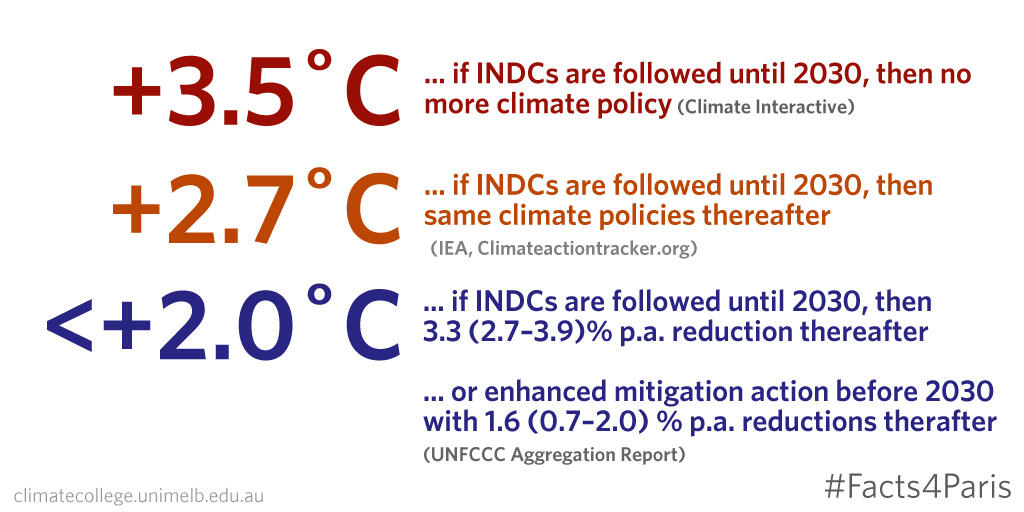Facts4Paris: Temperatures in 2100 could be 3.5°C, 2.7° or less than 2°C warmer, depending on what happens after 2030.

Temperatures in 2100 depend largely on emissions after 2030—that is on what happens after the INDCs lapse:
- If we assume "no direct connection between efforts before and after 2030", we may be set for a 3.5°C temperature increase by 2100, according to the Climate Interactive group.
- If we assume "a similar level of effort will be undertaken by countries post-2030 as applies in the period 2020-2030", we may see a 2.7°C warming, says the Climate Action Tracker (and a report by the International Energy Agency).
- If, however, we include all scenarios from the IPCC Fifth Assessment Report, we still have some chance of maintaining temperatures below 2°C, according to the UNFCCC Aggregation Report. This would require a 3.3% annual emissions reduction rate from 2030 to 2050 (full range is 2.7% to 3.9%) with reductions continuing thereafter towards zero emissions in 2100.
There is another alternative; it is to change the trajectory before 2030 by reviewing and strengthening the INDCs in line with a 2°C target. This would lower the required emissions reduction rate to just 1.6% per year—a much less daunting task.
Notes:
- Reduction rates here are measured against fixed 2010 emission levels, not against current emission levels from year to year; we think that this approach makes more sense (and the UNFCCC Aggregation Report agrees).
- For a full explanation of the different assumptions used by the Climate Interactive and the Climate Action Tracker, read this comparative assessment.
- Oh...and we'd like to mention that the climate model used by the IEA and the Climate Action Tracker to calculate the 2.7°C temperature increase is MAGICC, the model that we look after. We're glad that they have made good use of it, and you can too. It's available freely for use here: live.magicc.org.
